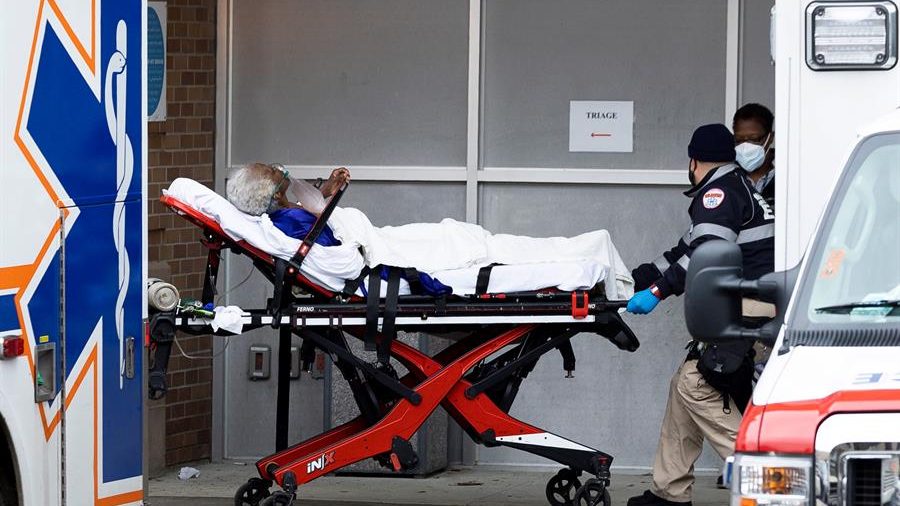
Over the past week, California has made an average of 42,452 new confirmed cases per day.
The US state of California, which at the beginning of the pandemic was an example for its management and low numbers of cases and deaths, has become the global epicenter of the health crisis for several reasons. What happened?
The abandonment of rural areas; the low review of working conditions by health authorities; the lack of economic relief for the poorest population; bed shortages in Intensive Care Units (ICUs) and the psychological consequences of prolonged school closures and outdoor activities are some of the factors that have led to this situation.
And all of this has made Los Angeles County the place in the country with the most cases detected (663,954) and deaths (9,153) within the United States, a nation with more than 18.4 million infected and 326,259 dead by COVID-19. according to the latest data from the independent Johns Hopkins University count.
Little attention to cases in rural areas
Although during the summer the number of cases in California declined markedly, infections in rural areas of the state, such as the Central Valley, persisted or grew.
YOU MAY BE INTERESTED IN: The British variant of coronavirus is also circulating in Belgium
“We don’t pay enough attention to the fact that, in rural farming communities, infection rates were very high during the summer and then that took its toll on us.”, Defended in an interview with Efe the American epidemiologist and physician at the University of California at San Francisco (UCSF), Kirsten Bibbins-Domingo.
According to an analysis by Stanford University, more than 5 million people live in rural California, representing 13% of the total population of the state.
Frontline working conditions
Another circumstance that has played a relevant role in the growth in the number of cases and deaths from COVID-19 in California is the low review of working conditions in places with “essential” workers, such as supermarkets or plantations. food.
In this sense, the president of the Department of Epidemiology and Biostatistics of the UCSF considers that the state of California “He has not taken a very active stance to enforce protections in the workplace.”
“We have detected great transmission in low-wage essential workers”, he comments.
Insufficient economic relief
For Bibbins-Sunday, the lack of powerful economic relief for the state’s poorest communities has also been one of the main factors the pandemic has hit hard in California, one of the most expensive states to live in the U.S. primarily in terms of transportation and accommodation costs.
“In ten months of pandemic, essential workers need to rest, isolate if they are infected, recover if they lose their jobs. But without financial relief, this is not possible.”, Emphasizes the pandemic expert.
YOU MAY BE INTERESTED IN: Joe Biden warns that the darkest days of the pandemic “are about to arrive” in the United States
Earlier this Thursday, Republicans in the U.S. House of Commons blocked the Democrats’ attempt to amend the $ 900 billion stimulus plan approved in Congress after U.S. President Donald Trump threatened to block it. -if no changes.
Specifically, Democrats wanted to increase from $ 600 to $ 2,000 the direct payments millions of taxpayers will receive after Trump demanded that increase Tuesday, in a petition that breaks with his party’s position.
Shortage of beds in the ICU
Over the past week, California has averaged 42,452 new confirmed cases per day, about 107.4 per 100,000 residents.
These high numbers of infections and low bed capacity in the state’s ICUs (in Southern California they are at 0% capacity) have resulted in a collapse in the California hospital system.
“The reality is that we have less capacity to withstand a major emergency like this, and that’s legitimately a big factor. But I think prevention is more important.”, Highlights the doctor.
Psychological consequences of a prolonged closure
To try to control the pandemic, California Gov. Democrat Gavin Newsom has been one of the strictest in terms of state restrictions, keeping schools closed throughout the pandemic and preventing access to nature parks. and beaches for several months.
“People are very tired of all this, and now that it’s really important to stay home, the attention is less.”, argues Bibbins-Domingo.
YOU MAY BE INTERESTED IN: Which is the only country in the world that does not have cases of COVID-19 and how has it managed to protect itself?